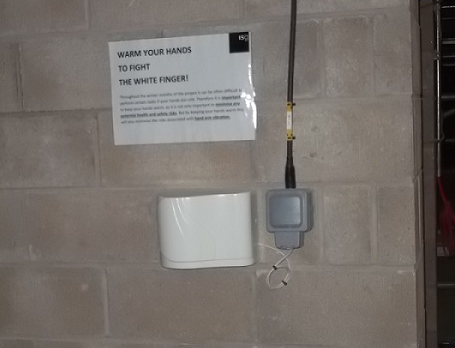A HAVS screening service can be offered to operatives to protect their health and wellbeing.
Hand Arm Vibration Syndrome (HAVS) is often referred to as white finger and it can affect anybody regularly using vibrating tools.
The Control of Vibration at Work Regulations 2005 was introduced with the aim to protect workers against risks to health from the over use of hand-held power tools (i.e. grinders, hammer drills, polishers, sanders, breakers, etc.), hand-guided machinery (such as lawnmowers and plate compactors) and hand-fed machinery (such as pedestal grinders). The majority of the regulations are centred on how an employer should protect their employees, but part of the regulation calls for suitable health surveillance from qualified professionals.
The Control of Vibration at Work Regulations introduces a detailed “Tier system” for HAVS assessments.
• Tier 1: An initial assessment before the employee starts work with vibrating tools.
• Tier 2: An annual assessment.
The minimum requirement for a Tier 1 or 2 HAVS assessment is for a questionnaire that is assessed by a competent person, i.e. an Occupational Health nurse, It is also recommended that an examination is carried out.
Anybody disclosing symptoms during Tier 1 or 2 reviews should then be subject to further detailed assessment.
• Tier 3: A ‘qualified health professional’ (normally a qualified Occupational Health nurse) administers a comprehensive and detailed questionnaire and carries out a range of clinical tests, and those with the appropriate symptoms and history progress to the next tier.
• Tier 4: This stage is when a formal diagnosis is made. It must be conducted by a suitably qualified Doctor. Any such formal diagnosis must be reported by the employer under RIDDOR 1995 regulations.
Did you find this article helpful?
Please rate this article

Loading...





